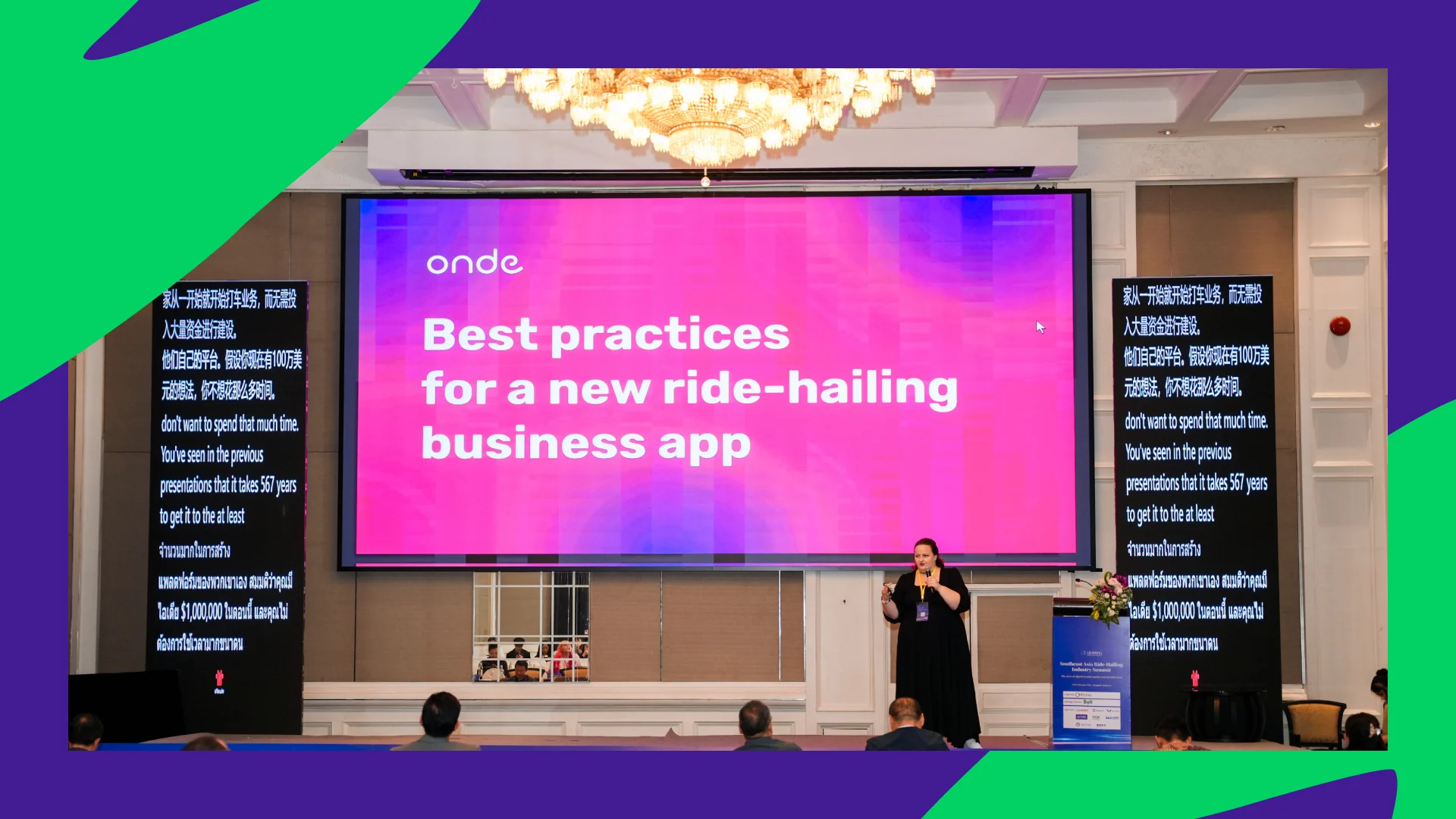5 Ride-Hailing Trends from SEARHS 2025 in Bangkok
Onde’s Natalia Pirtskhalashvili, who leads Business Development and Growth, joined mobility innovators from across the region for two days of insight-packed panels and open conversations. Natalia also shared her perspective on the panel “Taxis vs. Ride-Hailing: Competition or Cooperation?”, where industry players debated how legacy fleets and digital platforms can work together to build smarter cities.

Here are five of Natalia's key takeaways from the summit.
1. Ride-pooling is booming, for both cost and climate
There’s a clear uptick in demand for ride-sharing, also called pooled rides, across the region. Riders are increasingly open to sharing trips—not just to save money, but to help reduce congestion and environmental impact.
As cities across Southeast Asia crack down on traffic and emissions, shared mobility is becoming a more attractive solution for passengers and regulators alike.
2. EV adoption is growing… but infrastructure needs to catch up
The transition to EVs is seen as inevitable, fueled by rising taxes on combustion vehicles and falling EV prices in Southeast Asia.
But the real challenge now is infrastructure. Drivers of four-wheelers and two-wheelers need access to fast, reliable charging to make the switch to electric worthwhile.
3. Policymaking is catching up to reality
As the industry grows, regulation is starting to catch up, often reactively and under pressure from traditional taxi operators. Several SEARHS 2025 speakers pointed to government-led initiatives, such as standardizing license plates for vehicles offering transport and delivery services. This solution could help legitimize operators and streamline compliance for newcomers.
4. Credit access remains a pain point for drivers
Financing challenges in ride-hailing are a recurring theme. Many drivers in Southeast Asia struggle to qualify for bank loans due to a lack of formal income documentation.
One promising direction discussed at SEARHS: partnering with ride-hailing platforms to verify driver income and build alternative credit profiles. This could unlock new pathways to vehicle ownership and financial stability for drivers.
5. Ride-hailing apps as travel companions?
One unexpected angle was the role of ride-hailing platforms in enhancing the tourist experience. With more international travelers using local mobility apps, companies are exploring ways to offer recommendations for nearby sights, restaurants, and events, turning utility into hospitality. Mobility apps could potentially evolve into full city guides, adding value beyond the ride.
What does this mean for new market entrants?
The SEARHS summit made one thing clear: Southeast Asia’s ride-hailing market is still wide open, especially for entrepreneurs who understand local needs and are ready to build around them. From pooled rides and EV infrastructure to smarter regulation and bundled services, the future of mobility is being written right now, and there’s room for more voices.
If you’re planning to launch your own ride-hailing or delivery platform in the region, now’s a great time to act. With a platform like Onde, you can get to market faster and start growing from day one.

